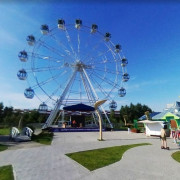Карта бразилии на русском языке
Содержание:
- Geography
- Food & drink identity information about Brazil
- Credits
- Facts about slavery in Brazil
- Credits
- Brazilian statistics
- Brazil number ones
- Interesting facts Brazil symbols
- Social data
- Funny Brazil facts
- Facts about Brazilian culture
- Климат
- World Heritage site
- Общая информация о Бразилии
- Fun facts about Brazil laws
- Background
- References
Geography
Bounded by the Atlantic Ocean on the east, Brazil has a coastline of over 7,367 kilometers. It borders Venezuela, Suriname, Guyana, and French Guiana to the north, Uruguay to the south, Argentina and Paraguay to the southwest, Bolivia and Peru to the west, and Colombia to the northwest. Numerous archipelagos are part of the Brazilian territory, such as Penedos de São Pedro e São Paulo, Fernando de Noronha, Trindade e Martim Vaz, and Atol das Rocas.
Brazil is traversed by the Equator and Tropic of Capricorn and is home to varied fauna and flora, as well as extensive natural resources.
The Amazon rainforest.
Brazilian topography is diverse, including hills, mountains, plains, highlands, scrublands, savannas, rainforests, and a long coastline. The extensive low-lying Amazon rainforest covers most of Brazil’s terrain in the north; small hills and low mountains occupy the south. Along the Atlantic coast there are several mountain ranges, with altitudes of roughly 9,500 feet (2,900 m). The highest peak is the 9,735 foot (3,014 m) Pico da Neblina (Misty Peak) in Guiana’s highlands. Major rivers include the Amazon, the largest river in terms of volume of water and the second-longest in the world; the Paraná and its major tributary, the Iguaçu River, where the Iguaçu Falls are located; as well as the Negro, São Francisco, Xingu, Madeira, and Tapajós rivers.
Climate
The Iguazu Falls
Brazil’s climate has little seasonal variation, since 90 percent of the country is located within the tropics. However, the climate varies considerably from the mostly tropical north (the equator traverses the mouth of the Amazon) to temperate zones below the Tropic of Capricorn, which crosses the country at the latitude of the city of São Paulo. Brazil has five climatic regions: Equatorial, tropical, semiarid, highland tropical, and subtropical.
Temperatures along the equator are high, but southern Brazil has subtropical temperate weather, normally experiencing frost in the winter (June-August), and occasional snow in the mountainous areas, such as Rio Grande do Sul and Santa Catarina. Temperatures in the cities of São Paulo and Brasília are moderate because of their altitude of approximately 3,000 feet (1,000 m). Rio de Janeiro and Salvador, located on the coast, have warm climates.
Precipitation levels also vary widely, being higher in the humid Amazon Basin and lower in the somewhat arid landscapes of the northeast. The majority of Brazil has moderate rainfall, with most of it falling in the summer (between December and April), south of the Equator. The Amazon region is notoriously humid, with rainfall of more than 2,000 millimeters per year, getting as high as 3,000 millimeters in parts of the western Amazon and near Belém. Despite high annual precipitation, the Amazon rainforest has a three-to-five month dry season.
Environment
The Toco Toucan is a typical animal of the Brazilian rainforest.
Brazil’s large area comprises different ecosystems, which together sustain some of the world’s greatest biodiversity. Because of the country’s intense economic and demographic growth, Brazil’s ability to protect its environmental habitats has increasingly come under threat. Extensive logging in the nation’s forests, particularly the Amazon, destroys areas the size of a small country each year, and potentially a diverse variety of plants and animals. Between 2002 and 2006, an area of the Amazon rainforest equivalent in size to the U.S. state of South Carolina was completely decimated, for the purposes of raising cattle and logging. By 2020, it is estimated, at least 50 percent of the species in Brazil may become extinct.
The Pantanal area of Brazil is considered by many to be the world’s largest, freshwater, wetland system. It is one of the most pristine and biologically rich environments on the planet. It also provides many economic benefits, including offering a huge area for water purification and groundwater discharge and recharge, climate stabilization, water supply, flood abatement, and an extensive, transport system, among numerous other important functions.
There is a general consensus that Brazil has the highest number of both terrestrial vertebrates and invertebrates of any single country in the world. Also, Brazil has the highest primate diversity, the highest number of mammals, the second highest number of amphibians and butterflies, the third highest number of birds, and fifth highest number of reptiles. There is a high number of endangered species, many of them living in threatened habitats such as the Atlantic forest.
Food & drink identity information about Brazil
Brazilians eat more rice and beans than feijoada
While feijoada is the national dish of Brazil, most people in the country eat daily rice and beans. Twice to be more precise, once for lunch and another for dinner.
That combination, rice and beans, is easy to prepare. That’s why most households cook it every single day.
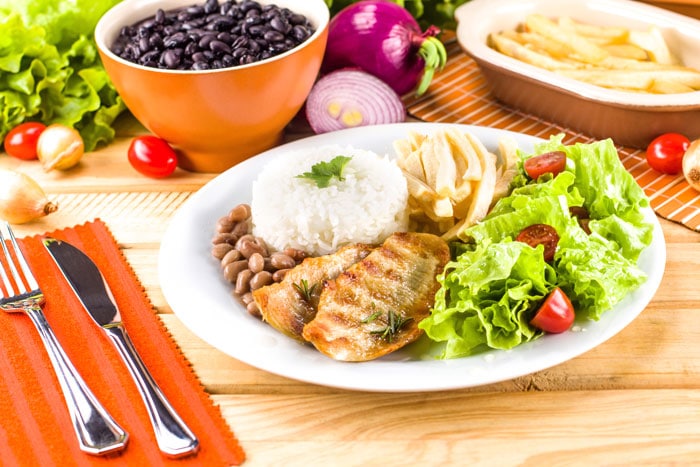
Brazilian rice and beans is a typical Brazilian lunch
A politician inspired the creation of Brigadeiro
What was a political campaign, became a national dessert.
If you don’t know, brigadeiro is the most consumed Brazilian dessert, and it all started with the presidential elections of 1945.
Back then, one of the candidates, a brigadier, was the favorite among the female voters, so to help his political campaign, many of them cooked desserts to serve at meetings.
As a result of the war, milk was scarce, so Heloísa Nabuco de Oliveira prepared chocolate fudge truffles with sweetened condensed milk instead.
The little balls were a success and spread quickly across the country. And because they didn’t know a better name, they called it brigadeiro (English: brigadier).
Cachaça was the first documented distilled in the Americas
Although there are registers that cachaça was first produced in Pakistan in 500 AC, the Portuguese brought the plant and technique to Brazil in the 16th-century.
The production of this spirit was first documented in 1622 in Brazil, and people loved it so much that, to this day, they still consume it widely all over the country.
Did you know? Cachaça is a distilled spirit made from fermented sugarcane juice.
In fact, this clear liquor is part of our most important cocktail, caipirinha. A refreshing and simple cocktail made with cachaça, sugar, and lime on rocks.
Tip from a local: A must-do in Brazil is to drink caipirinha in a samba bar or at the beach.
And here goes another Brazil fact, this spirit was recognized as a Geographical Indication of the country. That means, the name cachaça can only be used for bottles produced in Brazil.
So if you see a “Brazilian rum” in the liquor store, know that it didn’t come from Brazil.
Credits
New World Encyclopedia writers and editors rewrote and completed the Wikipedia article
in accordance with New World Encyclopedia standards. This article abides by terms of the Creative Commons CC-by-sa 3.0 License (CC-by-sa), which may be used and disseminated with proper attribution. Credit is due under the terms of this license that can reference both the New World Encyclopedia contributors and the selfless volunteer contributors of the Wikimedia Foundation. To cite this article click here for a list of acceptable citing formats.The history of earlier contributions by wikipedians is accessible to researchers here:
Brasilia, Brazil history
The history of this article since it was imported to New World Encyclopedia:
History of «Brasilia, Brazil»
Note: Some restrictions may apply to use of individual images which are separately licensed.
Facts about slavery in Brazil
Brazil was the country that imported the most African slaves
This disheartening fact about Brazil is still ignored by many people, while many others simply don’t know about it – the country imported by far the most slaves.
It’s estimated that about 12.5 million slaves were sent abroad, and 38.9% of all of them went to Brazil.
That’s somewhere around 4.8 million. Much more than the 2nd place British Caribbean which received about 2.3 million slaves.
Brazil was the last nation in the Americas to abolish slavery
As if having the most significant number of slaves wasn’t enough, Brazil was the last country in the Americas to abolish slavery in 1888.
After all the other countries in the western world and under significant pressure from Europe, Brazil finally abolished such horrific acts in the 19th-century.
Although this was a step toward equal rights for all races, it’s worth mentioning racism didn’t disappear from the country.

Facts about Brazil: 9% of the population is African descendant
Racism and slavery are touchy topics for the upper class in the country
Roughly 9% of the Brazilian population has African ancestry, and 46% is considered interracial, including Indigenous Brazilian, African, and European. We have ethnic groups from many regions worldwide, and we proudly say we’re a multicultural society.
See the slogan of this website, for example—experience diversity.
However, the economic inequality of blacks and mixed-race people in Brazil is alarming.
Many people claim the country is meritocratic and that racism doesn’t exist here; after all, Brazil is so multicultural, how could it be?
The reality isn’t pretty different, unfortunately. And many people, especially the upper classes of our society, simply deny talking about it.
However, more and more folks of all ethnicities feel suppressed by this. As a result, they are bringing up this and other touchy topics in the country, such as misogyny and the macho culture.
Editor’s note: The slogan of this website is “Experience Diversity” because my country is diverse, and I’m not only proud of it but I’m also fighting, together with fellow Brazilians, to make it equal for everybody.
Credits
New World Encyclopedia writers and editors rewrote and completed the Wikipedia article
in accordance with New World Encyclopedia standards. This article abides by terms of the Creative Commons CC-by-sa 3.0 License (CC-by-sa), which may be used and disseminated with proper attribution. Credit is due under the terms of this license that can reference both the New World Encyclopedia contributors and the selfless volunteer contributors of the Wikimedia Foundation. To cite this article click here for a list of acceptable citing formats.The history of earlier contributions by wikipedians is accessible to researchers here:
Brazil history
The history of this article since it was imported to New World Encyclopedia:
History of «Brazil»
Note: Some restrictions may apply to use of individual images which are separately licensed.
Brazilian statistics
Brazil has about 180 spoken languages
Yes, at least 180 languages. Although Portuguese is the official one, the other languages are spoken mostly by about 160,000 indigenous people.
However, according to the linguist Aryon Rodrigues from the National University of Brasilia (UnB), these languages are treated with extinction since fewer than 10,000 people currently speak them.
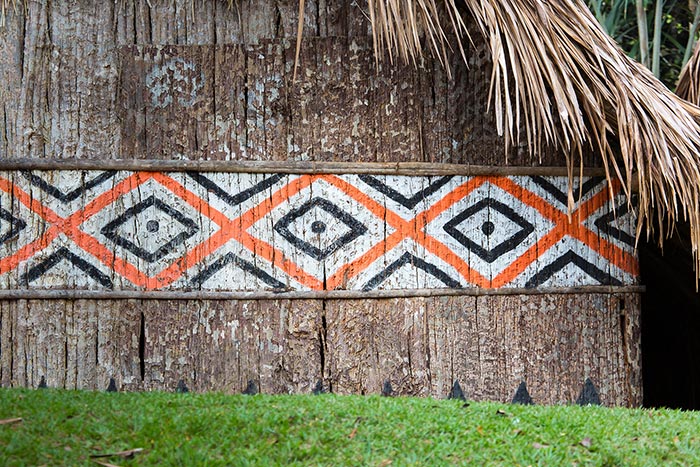
Brazil receives half the number of tourists Berlin does
While Brazil is a large country, there is still a lot to do in terms of increasing awareness about the country and attracting international tourists.
To put it into perspective, Brazil received 6.6 million tourists in 2018, while Berlin received 13.5 million in the same period.
Yes, a capital in Europe receives more tourists than a country with continental proportions.
It’s undeniable that criminality is an issue that the government isn’t very interested in solving. However, when taking necessary precautions and staying in the tourist routes, it’s improbable something will happen to visitors.
Brazil has the largest Japanese community outside of Japan
In 1908, the first Japanese immigrants arrived in Brazil, and since then, it has developed into the most significant ethnic Japanese population outside of their home country.
This is a pretty cool fact about Brazil, considering both cultures are very different from each other.
Nowadays, about 1.5 million Brazilian Japanese live in Brazil.
São Paulo has the highest GDP in the southern hemisphere
Brazil is a country of extremes, and this fact about Brazil only proves my point.
While millions of people in Brazil fight against extreme poverty, São Paulo is among the most important financial and industrial centers in the world and has the highest GDP in the southern hemisphere, let alone Latin America.
Many countries on other continents, including in Europe, have smaller economies than this huge South American city.
São Paulo dictates the pulse of the Brazilian economy as it accounts for over 30% of the country’s GDP.
The city’s GDP was about $530 billion in , while the GDP of Mexico City was about $490 billion in the same period.
Brazil number ones
São Paulo is the largest city in the southern hemisphere
Brazil’s vibrant financial center, São Paulo metropolitan area, has about 21 million residents, while the city has approximately 12 million.
No wonder people call it the New York of South America. São Paulo is a massive city.
Brazil has more animal and plant species than any other country in the world
There’s a consensus in the biology world that Brazil is the most biodiverse country on the planet and rightly so because Brazil has the most known plants, amphibians, freshwater fish, and mammals.
Brazil has two biodiversity hotspots (the Atlantic Forest and savanna, known as cerrado), six terrestrial biomes, and three large marine ecosystems.
At least 103,870 animal species and 43,020 plant species are currently known in the country, comprising 70% of the world’s cataloged animal and plant species, according to Biofin.
Brazil has been the largest producer of coffee for the last 150 years
If you’re a coffee drinker, odds are you drank Brazilian coffee this year.
That’s because Brazil is by far the world’s largest producer and exporter of coffee, accounting for 30% of the world’s production.
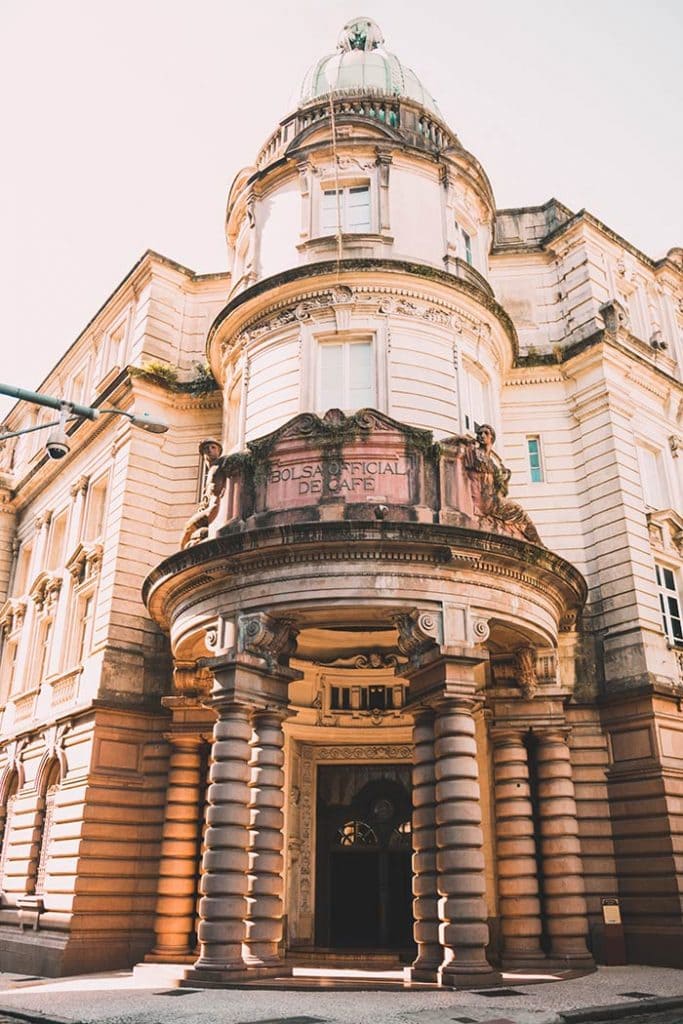
Brazil facts: The country has been the largest producer of coffee for the last 150 years
Interesting facts Brazil symbols
São Paulo State’s flag was supposed to be Brazil’s flag
After the country became a republic, people wanted a new flag to represent a new beginning.
Many projects were presented to the authorities at the time. Still, the current flag of São Paulo is one of the best-known rejected projects.
And because of this rejection, the state of São Paulo won a tricolor flag where each color represents the major ethnic groups in Brazil.
The black represents the African slaves who built the country, the white represents the European immigrants, and the red represents the Indigenous people of our lands.
The stars on the Brazilian flag depicts a specific starry night
The starry night on the flag, a national symbol of Brazil, isn’t any ordinary night, but the one of November 15, 1889, as seen from Rio de Janeiro.
On that day, a military coup d’etat established the Republic of Brazil, and an astronomer was asked to draw the sky above their heads and mark that day in history. (And in our flag too.)
The lone star in the flag isn’t the capital, Brasília
Each star on the Brazilian flag represents a state or the capital.
While many people believe the lone star at the top half of the flag is Brasília, the country’s capital, I can tell you that’s a big misconception.
In fact, that star represents Pará, a northern state. At that time, Pará was the northernmost state in Brazil, Amapá and Roraima were created later.
And since each state’s position was chosen according to their location in Brazil, Pará is the lone star.
Social data
Economy
Headquarters of the Central Bank of Brazil
Brasília’s economy is dominated by the services, which account for 91 percent of the local GDP. These include government, with the public sector accounting for around 40 percent of the city jobs; communications, including Brasil Telecom’s headquarters, as well as public and private television stations; banking and finance; entertainment; information technology; and legal services.
Industries in the city include construction, food processing, furniture making, recycling, pharmaceuticals, printing, and publishing.
The main agricultural products produced in Brasília are coffee, guava, orange, lemon, papaya, soy beans and mango.Brasília’s farms have over 110,000 cows and it exports wood products worldwide.
The city’s Gross Domestic Product is estimated at $27.628 billion. The participation in the Brazilian GDP is 1.8 percent. Brasília has the largest per capita income of any city in Brazil.
Infrastructure
The consumption of commercial energy at Brazil’s capital was 924 gwh, the industrial reached 337 gwh, and the residential reached 1,241 gwh. The total energy consumption was 3,319 gwh.
The railways system is not developed, with only 22.4 miles operating. However, a fast-track train connecting Brasília to Goiânia is under construction. The train will travel at an average of 115 miles per hour. Furthermore, the city has a small subway (25.5 miles) covering one «wing» of the city plan of the Distrito Federal. Railways connect the city with Rio de Janeiro and São Paulo.
Automobiles and buses are the main forms of urban transportation because of the priority afforded expressways in the city’s design and the large distances between inner-city neighborhoods. The total extension of Brasília’s paved roads is 84 miles, with 44 percent of all its roads paved. As of 2006, there were approximately 1 million vehicles in the city, for a population of about 2.3 million. Highways link Brasília with the rest of the nation.
There is regular national and international air service out of Brasília International Airport (BSB) which serves the metropolitan area. There is a television tower (735 feet high) located in the heart of the city.
Population growth
Despite its lauded planning, Brasília is far from immune from the problems of «urban sprawl.»
The 1960 census counted almost 140,000 residents in the new Federal District; by 1970 this figure had grown to more than 537,000. In 2000 the population of the Brazilian Federal District stood at more than two million, more than three times the original plan. Brasília’s inhabitants include a significant foreign population as well as large numbers of Brazilian migrants.
Brasília is considered to have one of the highest growth rates in Brazil, increasing its size by an average of 2.82 percent each year. The Human Development Index in the city is 0.844 (developed nation level), and the illiteracy rate is around 4.35 percent.
Local government
Until 1990, the Brazilian president appointed the governor of the Federal District, who was confirmed by the Senate. In that year, under the 1988 constitution, Joaquim Domingos Roriz was chosen in the first election for district governor. Reporting to the governor are numerous secretaries responsible for public works, welfare, education, law enforcement, and other concerns. The Senate acts as the legislative branch of local government. In 1986, the voters in the district elected their first congressional representatives to the national assembly, and since that time elections have been conducted the same as in any of Brazil’s states.
Climate
Brasília’s weather is semi-arid, with seasons being defined according to the degree of humidity of the air: one season is dry and colder, while the other one is humid and hot. The average temperature is 69° F. In October, the hottest month of the year, the highest temperatures stand at 85° F, while in July, which is the coldest month, the lowest temperatures stand at 55° F.
Funny Brazil facts
People of Pomerode Town in the south of Brazil learn a dialect of German at school
There is some stuff about Brazil that lots of Brazilians don’t know, and this information is one of them.
Maybe you don’t know, but loads of Germans immigrated to Santa Catarina and Rio Grande Do Sul in the 20th-century.
And one of the most interesting facts about Brazil is that a few German communities are still living according to their traditions.
And even more mind-blowing is that they speak a dialect of German in Brazil! Can you imagine speaking German in Brazil? Time to plan Oktoberfest in Blumenau then.
The deadliest place on earth is in Brazil
That’s a place you won’t want to visit in Brazil. In fact, no one is allowed to set foot on this island as it’s extremely dangerous.
Whoever wants to visit Queimada Grande Island, also known as Snake Island, must ask for authorization of the Brazilian Navy, take proper instructions, and be accompanied by a doctor, in case of any bites.
Generally, only scientists are allowed into the island.
That’s because, as the name suggests, this island is jam-packed of snakes. I know this is a rather weird fact about Brazil.
Still, to give you a better idea of how dangerous it is, Queimada Grande Island has about 45 venomous snakes per 328 ft (100 m).
Brazil is the country with the most national parks in the Americas
It doesn’t come as a surprise that Brazil is abundant in national parks. The country is massive, after all.
But an interesting Brazil fact is that the country has the most national parks in the whole American continent.
In total, Brazil has 72 national parks scattered throughout its territory, but most of them are in the northern region.
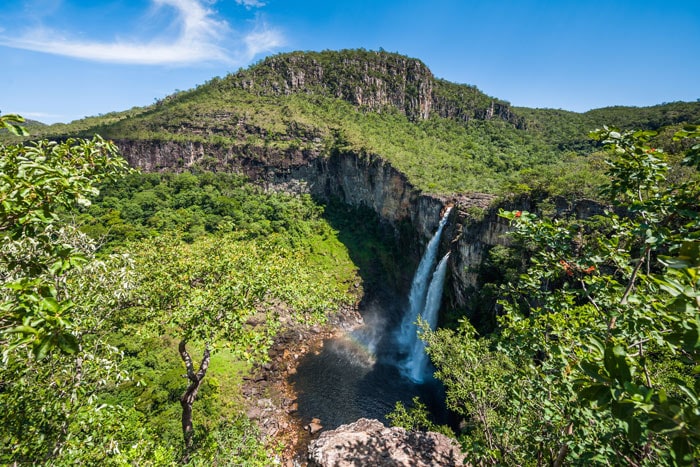
Chapada dos Veadeiros National Park
Facts about Brazilian culture
These are some facts about our customs and traditions, but to get a better sense of our society, read this guide on Brazilian culture.
The color we wear on New Year’s Eve isn’t random
We Brazilians have many quirky and unusual traditions.
Still, my favorite of them all is that we choose a specific color to wear on New Year in Brazil based on our wishes for the upcoming year.
Each color has a different meaning, so most people use a combination of white (for peace) with red (for love) or gold (for money), and so on.
I know this is a fun fact about Brazil, or better put, Brazilians. If you visit the country during that time, you’ll experience it yourself.

Most popular last name in Brazil is Silva
This Brazil fact is also shared with Portugal as the last name Silva is the most common there too.
The variation “da Silva” is in 22nd place, with just over 1 million people in Brazil. But the origin of both “Silva” and “da Silva” are the same: as a toponymic surname (named after a place), it derives from the Latin term silva, which means “jungle” or “forest.”
With the presence of the Romans in the Iberian Peninsula, many Lusitanians incorporated Silva in their own name.
Centuries later, many of them brought the name to Brazil during colonial times, and it became an even larger group after the abolition of slavery.
Brazilians are highly sexually active
It isn’t a surprising fact about Brazil, a country known for its beautiful people, that the population is the world’s second-most sexually active.
Take a stroll in any beach to see many people working out and just sunbathing their trained bodies.
As people who love music, I believe the “warm” beats and lyrics of Brazilian music also play a significant role while flirting.
Климат
Несмотря на то, что 90% территории страны находятся в тропическом поясе, более 60% населения Бразилии проживает в зоне умеренных температур, формирующихся под воздействием преобладющих высот, дующих со стороны моря ветров и фронтов холодного воздуха.
В Бразилии представлены пять климатических типов: экваториальный, тропический, полузасушливый, тропический высокогорный, и субтропический. Для городов, расположенных на равнинной местности, таких как Сан-Пауло, Бразилиа и Бело-Оризонте, характерны умеренные температуры среднее значение которых составляет + 19 градусов.
#BANNER#
Города Рио-де-Жанейро, Ресифи и Салвадор, расположенные на побережье, характеризуются жарким климатом, который смягчает тропический ветер.
Субтропический климат южных городов, таких как Порто-Алегре и Куритиба, сравним с некоторыми регионами США и Европы, где случаются периодические заморозки. Зимой в этом поясе температура может опускаться ниже нуля.
Несмотря на расхожее мнение о том, что в бассейне Амазонки царит невыносимая жара, температура в этом районе не превышает + 32 градусов, а ее среднегодовое значение составляет + 22-26 градусов при незначительных сезонных колебаниях в самые жаркие и самые холодные месяцы года.
Самый жаркий район Бразилии — это северо-восток. В период засухи, длящийся с мая по ноябрь, температура воздуха на северо-востоке повышается до + 38 градусов. По сравнению с Амазонкой этот район Бразилии характеризуется более резкими сезонными колебаниями температур. Вдоль побережья Атлантического океана от Ресифи до Рио-де-Жанейро средняя температура колеблется от + 23 до + 27 градусов.
На возвышенных территориях в глубине страны температура понижается до + 18-23 градусов. К югу от Рио-де-Жанейро различия между временами года становятся более отчетливыми, а сезонные колебания температур — более ярко выраженными. В этом районе страны среднегодовое значение температур составляет от + 17 до + 19 градусов.
Времена года в Бразилии распределяются следующим образом:
Весна: с 22 сентября по 21 декабря
Лето: с 22 декабря по 21 марта
Осень: с 22 марта по 21 июня
Зима: с 22 июня по 21 сентября
World Heritage site
The Brazilian capital is the only city in the world built in the twentieth century to be awarded by UNESCO, a United Nations agency since 1987, the status of being a World Heritage Site.
In order to be considered for World Heritage status, a site must fulfill one of ten standards for qualification. Brasilia fulfilled two:
- to represent a masterpiece of human creative genius
- to be an outstanding example of a type of building, architectural or technological ensemble or landscape which illustrates (a) significant stage(s) in human history
Created from nothing in the center of the country Brasilia is a landmark in the history of town planning, from the layout of the residential and administrative districts to the symmetry of the buildings themselves, which are designed to harmonize with the city’s overall design. The official buildings, in particular, are innovative and imaginative.
Общая информация о Бразилии
Официальное название: Федеративная Республика Бразилия
Столица: Бразилиа
Площадь территории: 8 547,4 тыс. кв. км
Общее население: 201,1 млн. чел.
Административное деление: Государство разделено на 23 штата, один столичный округ и 3 федеральных территории.
Форма правления: Республика, с федеративным государственным устройством.
Глава государства: Президент, избираемый на 5 лет.
Состав населения: Этнические группы: белые — 53.9 %(португальцы — 20 %; итальянцы — 14 %; испанцы — 8 %; немцы — 6,6 %; арабы — 5,3 %); мулаты — 38,5 %; чёрные — 6,2 %; азиаты — 0,5 % ( японцы и пр.); индейцы — 0,43 % (тупи-гуарани, же, араваки, карибы, пано и др.).
Так же есть самбо (афро-индейцы) и пардо (коричневые) — их количество точно не известно.
Государственный язык: португальский. Также используются испанский, немецкий, итальянский, японский , украинский , английский и индейские языки.
Религия: 73,6% — католики, 15,4% — протестанты, 1,3% — спиритуалисты, 0,3% — банту/вуду, 7,4% — атеисты, 2% — другие.
Интернет-домен: .br
Напряжение в электросети: ~127 В/220 В, 60 Гц
Телефонный код страны: +55
Штрих-код страны: 789-790
Fun facts about Brazil laws
The flag should always be up-to-date
As said before, the starry night on the Brazilian flag depicts the night on November 15, 1889, the Proclamation of the Republic, and these stars aren’t random.
Each one of them represents a Brazilian state as well as the country’s capital in a specific constellation.
And another Brazil fun fact is that the law imposes the flag should always be up-to-date. That means if a Brazilian state is created or abolished, the stars on the flag should reflect that.
No one can get arrested on the days before an election
Well, almost no one. But this rather absurd Brazilian law that imposes authorities may not arrest or detain any voter starting five days before elections up to 48 hours after the election closing.
The only exceptions to that, so the only cases when a voter can get arrested is when the person is caught in committing a crime or if the person committed one of the following crimes instead:
- Torture
- Drug dealing
- Racism
- Heinous crimes
- Any offense against the state
It’s bizarre, I know. But the reason for this law is that the government wants to avoid unfair arrests caused by opposing parties that might try to frame other people and influence the election results.
Committing an environmental crime on Sundays and holidays is an aggravating factor
It’s common and right to punish crimes against the environment. But the weird fact about Brazil is that committing this kind of crime on Sundays, holidays, or during the night is an aggravating factor.
That’s because inspectors don’t work during those hours and days, and the government wants to discourage people from committing crimes during the period the inspectors don’t work, increasing the chance of getting infractors.
Background
The city was built to bring the capital, previously Rio de Janeiro, to Brazil’s midwest and closer to the other regions. This was done using a large workforce coming from throughout the country. Brasília is known internationally for having applied the principles established in the Athens Charter (1933). The charter laid out a 95-point program for planning and construction of rational cities, addressing topics such as high-rise residential blocks, strict zoning, the separation of residential areas and transportation arteries and the preservation of historic districts and buildings. The key underlying concept was the creation of independent zones for the four ‘functions’: living, working, recreation, and circulation.
History
From 1763 to 1960, Rio de Janeiro was the capital of Brazil. During much of this time resources tended to be centered in Brazil’s southeast region near the capital.
The idea of placing Brazil’s capital in the interior dates back to the first republican constitution of 1891, which roughly defined where the federal district should be placed. The site itself was not specifically defined until 1922. The location would promote the development of Brazil’s central region and better integrate the entire territory of Brazil.
Then-President Juscelino Kubitschek de Oliveira ordered the construction of Brasília. Lúcio Costa was named the main urban planner after winning a contest to gain the privilege of designing the city. Oscar Niemeyer was the chief architect of most public buildings and Roberto Burle Marx was the landscape designer. Brasília was built in 41 months, from 1956 to 1960 when it was officially inaugurated.
According to a legend, Italian saint Don Bosco had a prophetic dream in 1883 in which he described a futuristic city that roughly fitted Brasília’s location. Today, in Brasília, there are many references to this educator who founded the Salesian order. One of the main cathedrals in the city bears his name.
References
- Alves, Maria Helena Moreira. State and Opposition in Military Brazil. Austin, TX: University of Texas Press, 1985. ISBN 0292775989
- Amann, Edmund, and Werner Baer. The Illusion of Stability the Brazilian Economy Under Cardoso. Urbana, IL: University of Illinois at Urbana-Champaign, 1999.
- Bellos, Alex. Futebol: The Brazilian Way of Life. New York: Bloomsbury, 2002. ISBN 1582342504
- Bethell, Leslie. Colonial Brazil. Cambridge: Cambridge University Press, 1987. ISBN 0521341272
- Costa, Cruz. A History of Ideas in Brazil; the Development of Philosophy in Brazil and the Evolution of National History. Berkeley: University of California Press, 1964.
- Fausto, Boris. A Concise History of Brazil. Cambridge Concise Histories. Cambridge: Cambridge University Press, 1999. ISBN 052156526X
- Furtado, Celso. The Economic Growth of Brazil, a Survey from Colonial to Modern Times. Berkeley: University of California Press, 1963.
- Leal, Victor Nunes. Coronelismo the Municipality and Representative Government in Brazil. Cambridge: Cambridge University Press, 1977. ISBN 0521214882
- Malathronas, John. Brazil Life, Blood and Soul. Summersdale Travel. Chichester, West Sussex, UK: Summersdale, 2003. ISBN 1423745272.
- Martínez-Lara, Javier. Building Democracy in Brazil the Politics of Constitutional Change, 1985-95. New York: St. Martin’s Press, 1996.
- Prado Júnior, Caio. The Colonial Background of Modern Brazil. Berkeley: University of California Press, 1967.
- Schneider, Ronald M. Brazil Culture and Politics in a new Industrial Powerhouse. Boulder, CO: Westview Press, 1996. ASIN B079ZBZJS6
- Skidmore, Thomas E. Black into White; Race and Nationality in Brazilian Thought. New York: Oxford University Press, 1974. ISBN 0822313200
- Wagley, Charles. An Introduction to Brazil. New York: Columbia University Press, 1963.
- The World Almanac and Book of Facts. New York: World Almanac Books, 2006. ISBN 0886879647
